Visiting a museum is sometimes like a journey and this is particularly the case at the Quai Branly – Jacques Chirac Museum, which invites us to take the road of the Cameroonian chieftaincies, communities located in the Grassfields mountainous region and which preserve a unique culture, traditions and heritage.
Subtitled “From the Visible to the Invisible”, this exhibition presents the art of the Chieftaincies but also the very strong beliefs that have a predominant place in the culture and lifestyle of these communities. Zoom on this exhibition to be discovered until 17 July 2022!
Article produced in partnership with the quai Branly – Jacques Chirac museum
Summary
The Cameroonian chieftaincies
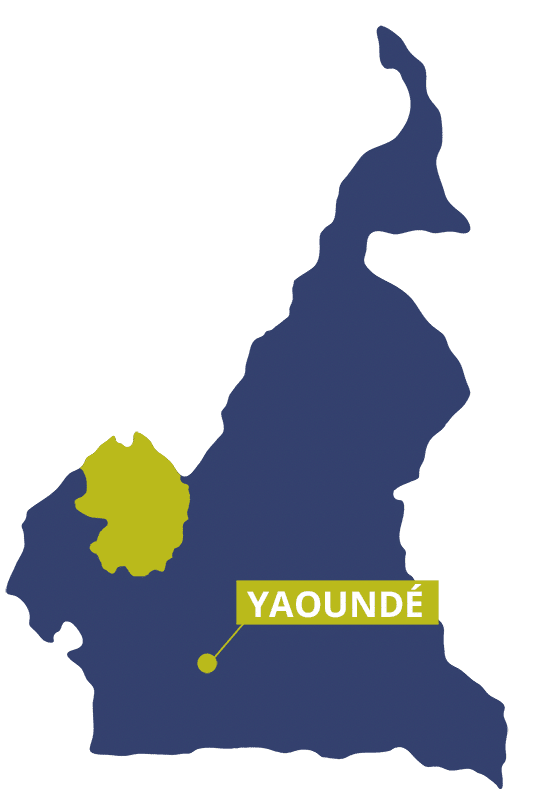
Cameroon is a country in Central Africa with a population of more than 25 million and around 250 ethnic groups. In the western highlands region, the mountainous and volcanic lands called “Grassfields” are areas marked by chieftaincies. An organisation inherited from the 18th century when many kingdoms were formed under the authority of a chief (fo), a quasi-divine figure who preserves the traditions and culture of Bamiléké.
The exhibition invites us to discover this culture where the living world dialogues with that of the ancestors thanks to more than 250 objects from 25 chieftaincies presented alongside contemporary works that testify to the cultural influence of the chieftaincies on today’s art.
What is the role of the chief?
In the past, the chief was master of war and justice but his role is now restricted to traditional matters (inheritance, matrimonial disputes, etc.). Since the creation of the State of Cameroon in the early 1960s, chiefs have also been responsible for maintaining order and for the economic and social development of their territory.
The organisation of a chiefdom
Each chieftaincy has a well-defined territory, administered by a chief and a council of notables. The organisation of a chiefdom is closely linked to its spatial structure and what better way to understand how it works than to enter a chiefdom? Passing through sculpted pillars similar to a traditional entrance, the exhibition takes us to the heart of a chiefdom whose central axis leads to the traditional palace and then to the sacred forest, reserved for the initiated.
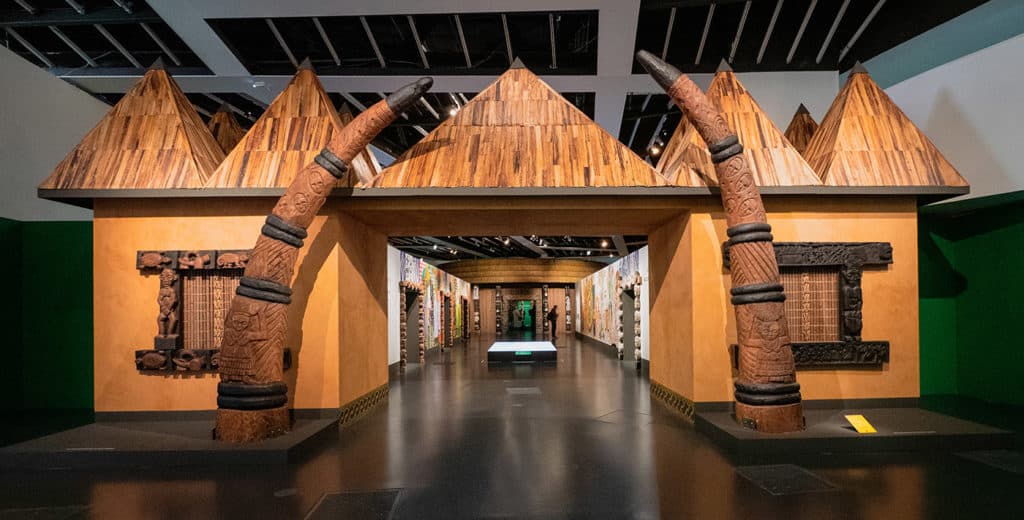
This axis, a symbol of life where man, animals and ancestors interact, reflects the forces that underlie the society. Indeed, in the culture and beliefs of the chieftaincies, animals and plants have a particularly important place. Individuals are thus associated with an animal totem with which they live in perfect harmony, so much so that when a person is ill, a little of its blood is inoculated into an animal that is followed to observe the plants that it eats. These are then administered to the sick person in order to heal him.

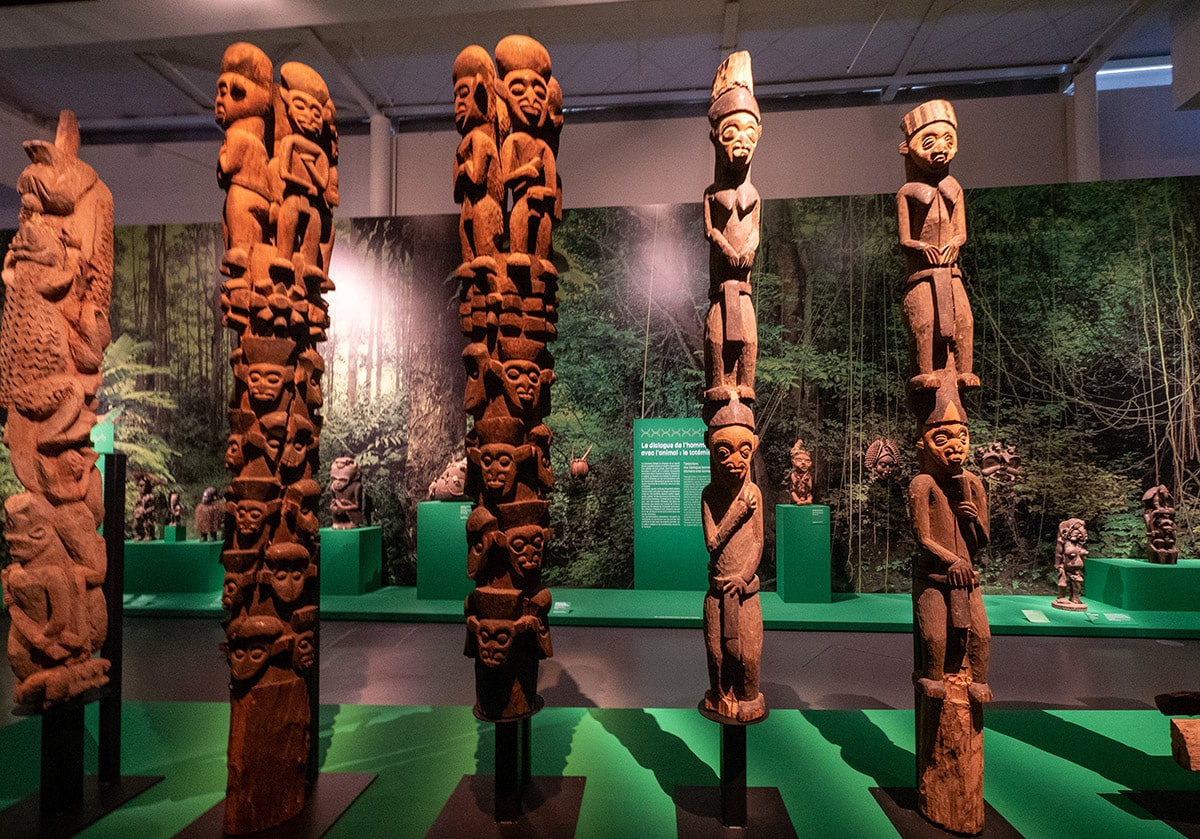
Certain animals are also found on sculptures, as symbols: the snake, both feared and venerated, can be considered as a bearer of bad news as well as a protector; the two-headed snake is a symbol of cunning, wisdom and royalty, etc.
Ancestor worship is also very strong. When a person dies, he or she is buried in a small group, but the real funeral takes place one or two years after the death and is attended by many people. On this occasion, the skull of the deceased is recovered, which then acquires the status of ancestor and is consulted for major decisions.
Art in the service of power
The chief is considered to be a quasi-divine figure with sacred power. His role is to ensure the security and prosperity of the population but he is also the guarantor of traditions. However, he does not govern alone, he is surrounded by the ancestors and a council of notables.
Art is often associated with power or religion. The creation or use of thrones, drums or masks is subject to rituals, which gives these objects a sacred character.
Thrones
One of the most impressive areas of the exhibition is the room where some fifteen thrones are displayed, testifying to the artistic diversity of the Grassfields.
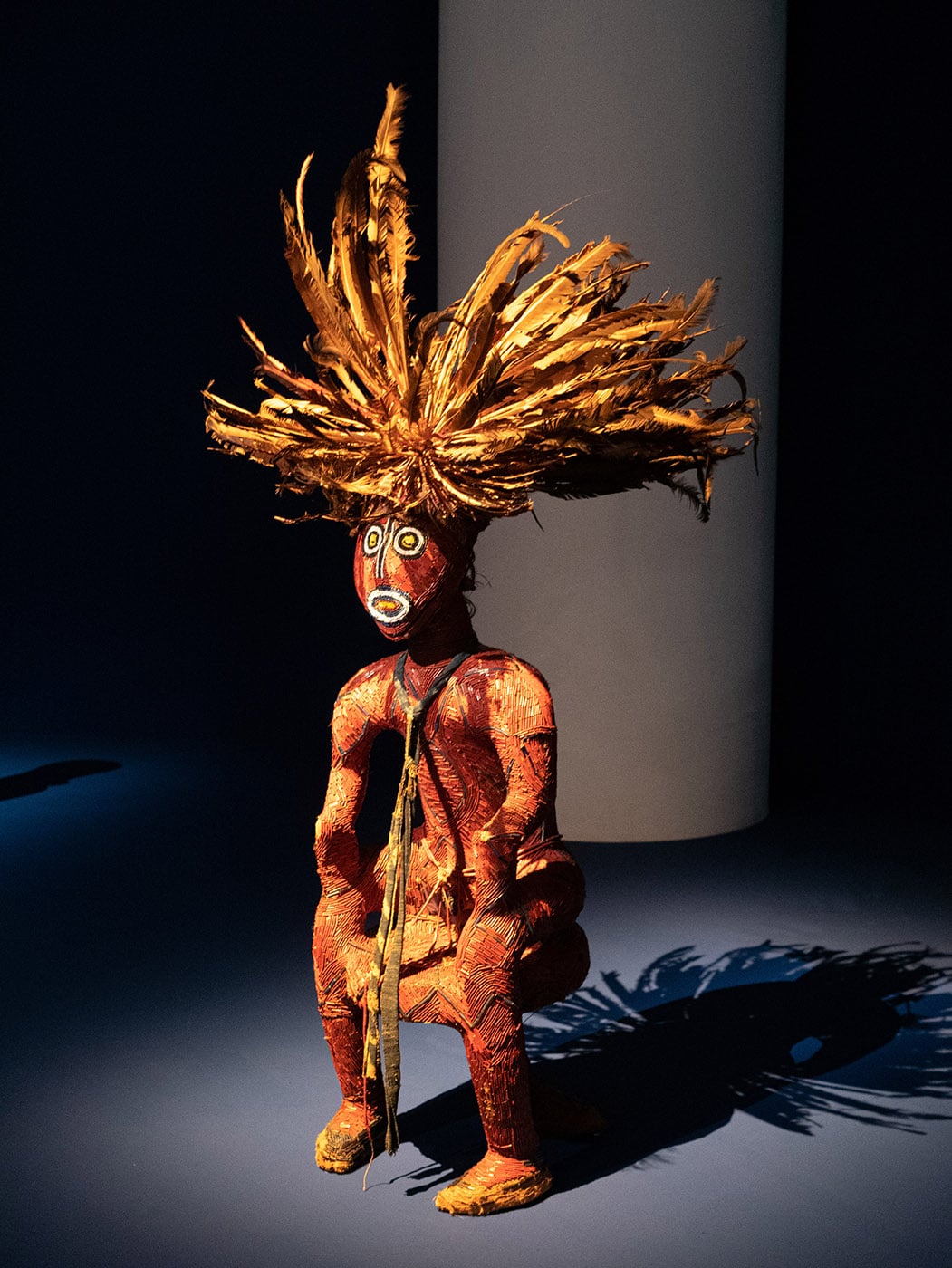
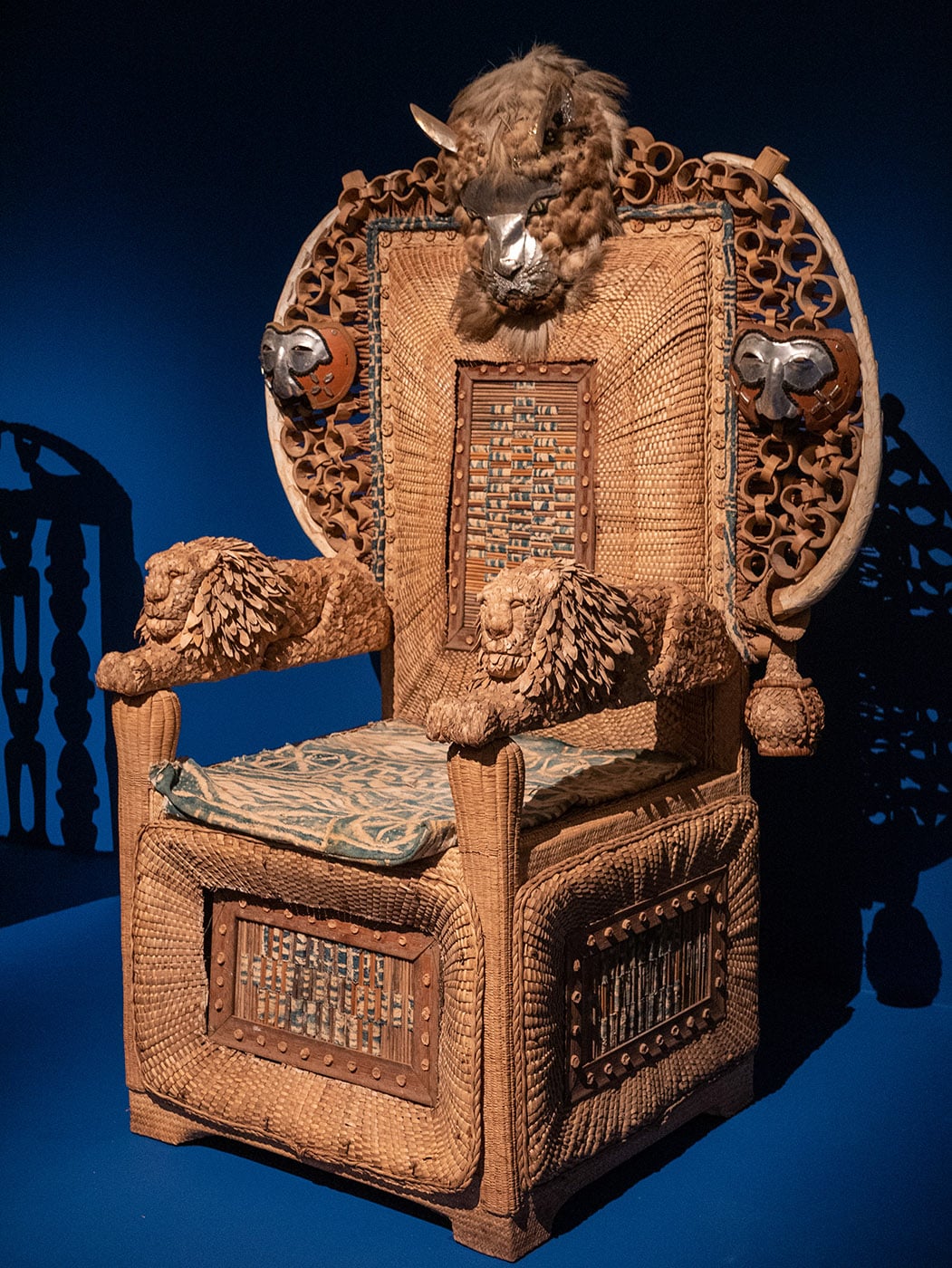
Before his death, the chief and the council of notables chose one of his sons as his successor. After a nine-week induction period, the successor acquires several thrones, the centrepiece of the royal treasury, and must then have his own throne made.
The clothing worn by the Grassfields people is a form of artistic expression, but some materials are reserved for the chiefs. This is the case with beads, which symbolise wealth and power, but also with feathers and bells.
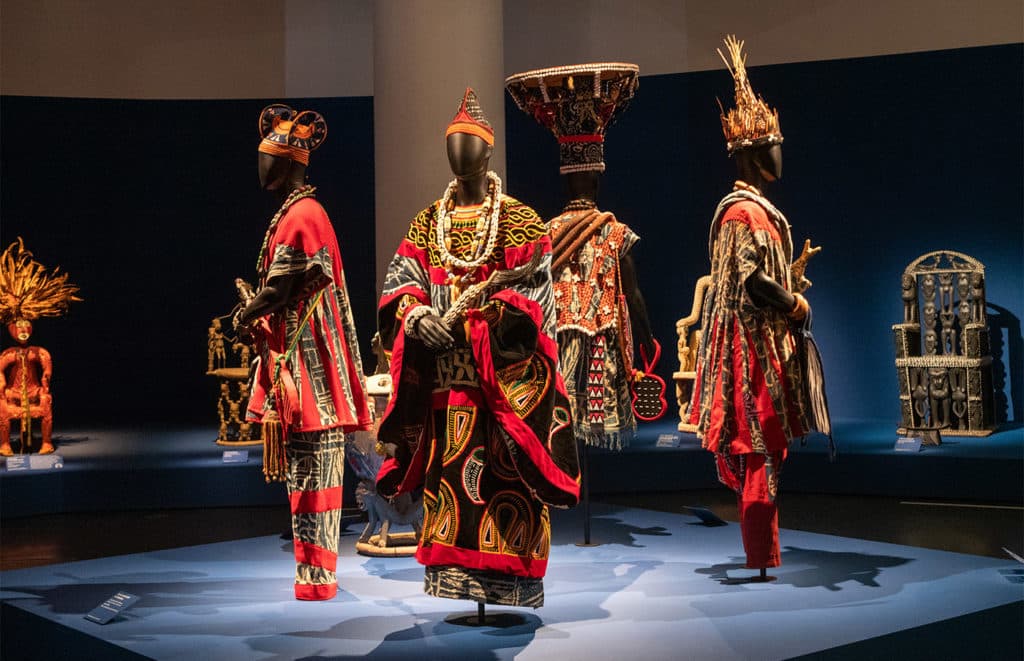
The place of women in the chiefdoms
In the Grassfields, women are the guardians of the lineage and the guardians of the cult. They participate in births, marriages and funerals and may also have roles of great responsibility.
A chiefdom has several queens: the chief’s wives who have an advisory role, and the chief’s mother (mafo) who is the most prestigious title to which women can lay claim, she has the right to represent the chief at ceremonies and can also join the men, own her own land and sometimes choose her husband. It is interesting to observe the representations of women which are not those of a fragile person but, on the contrary, a strong woman with broad shoulders.
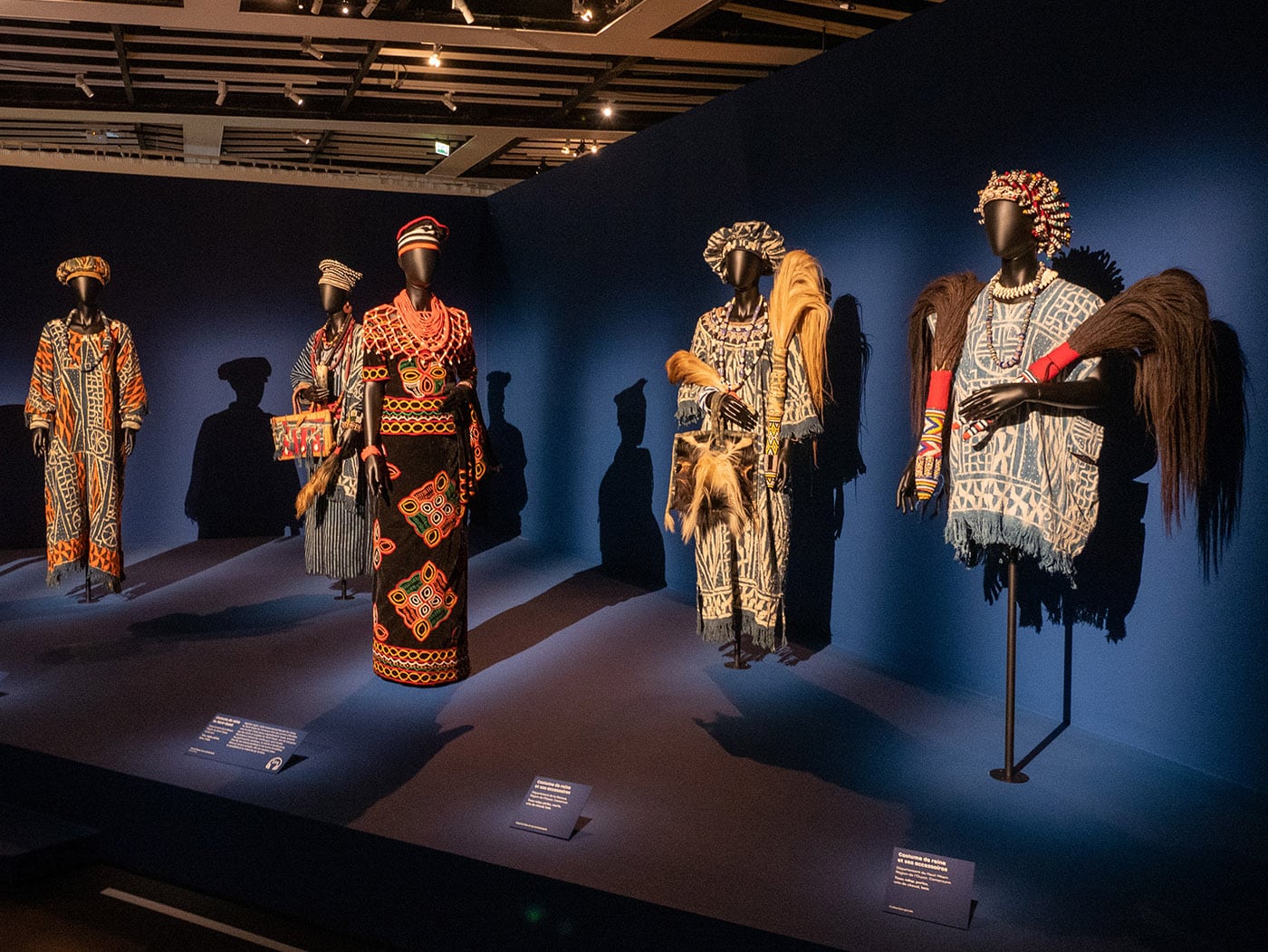
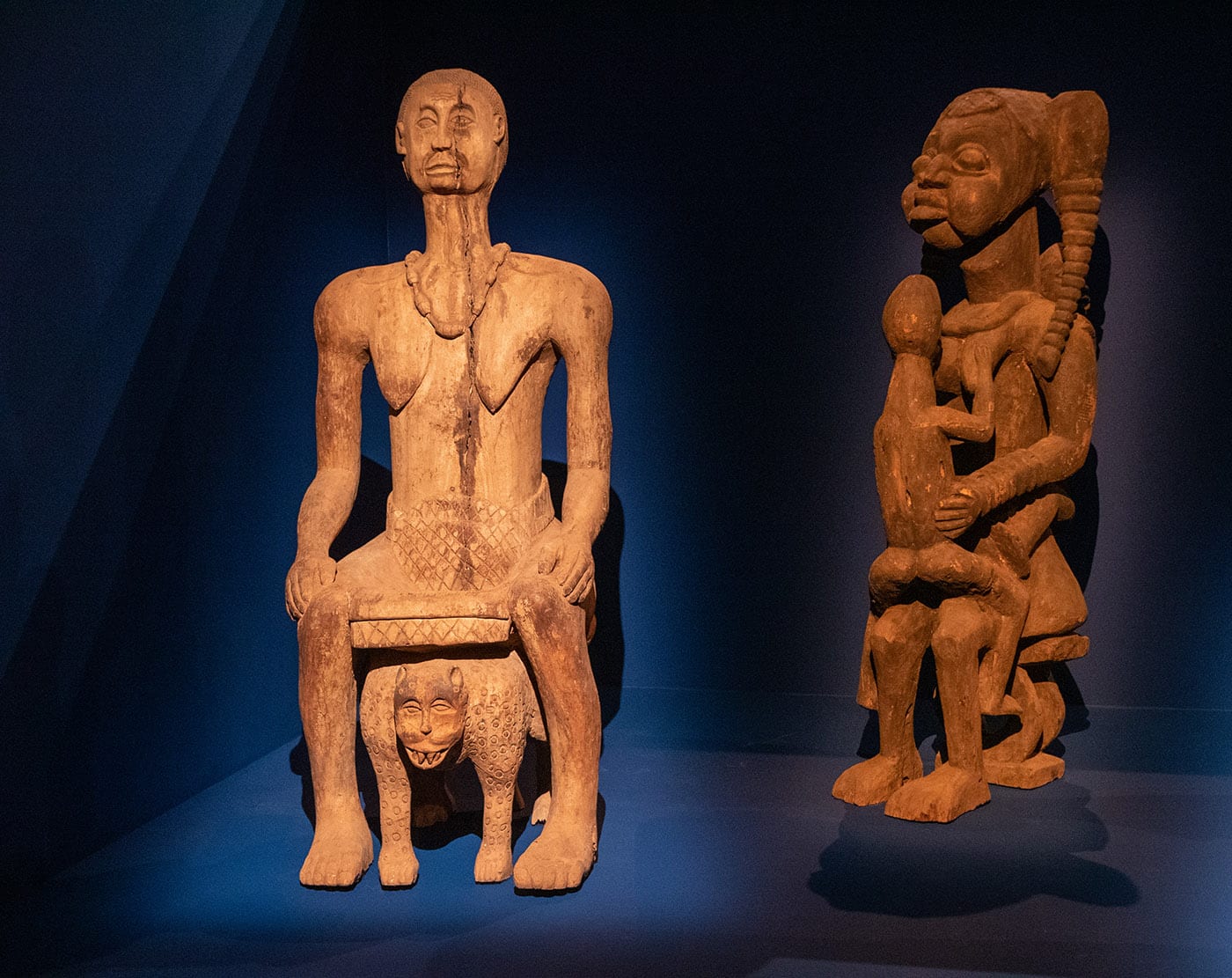
Discovering secret societies
In the organisation of the chieftaincy, the ‘secret societies’ (or brotherhoods) play a counter-power role. They provide a framework for the power of the chief by participating in community affairs.
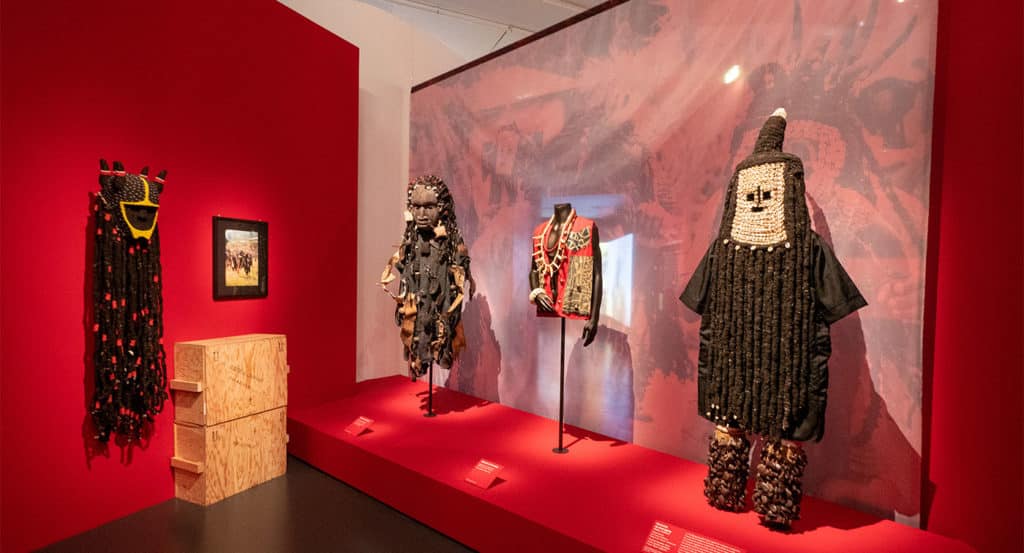
Each secret society has its own dances, rites, customs and art. Their masks and headdresses also suggest the presence of the invisible. Some masks are charged with spiritual forces that allow rites to be held. Thus, it took several ceremonies to allow many objects to come to the Quai Branly – Jacques Chirac Museum.
Contemporary creation in the spotlight
Throughout the tour, contemporary works are displayed alongside ancient ones. This is a way of showing us the dynamism of Cameroonian creation but also the influence that traditional beliefs and practices still have on today’s art.
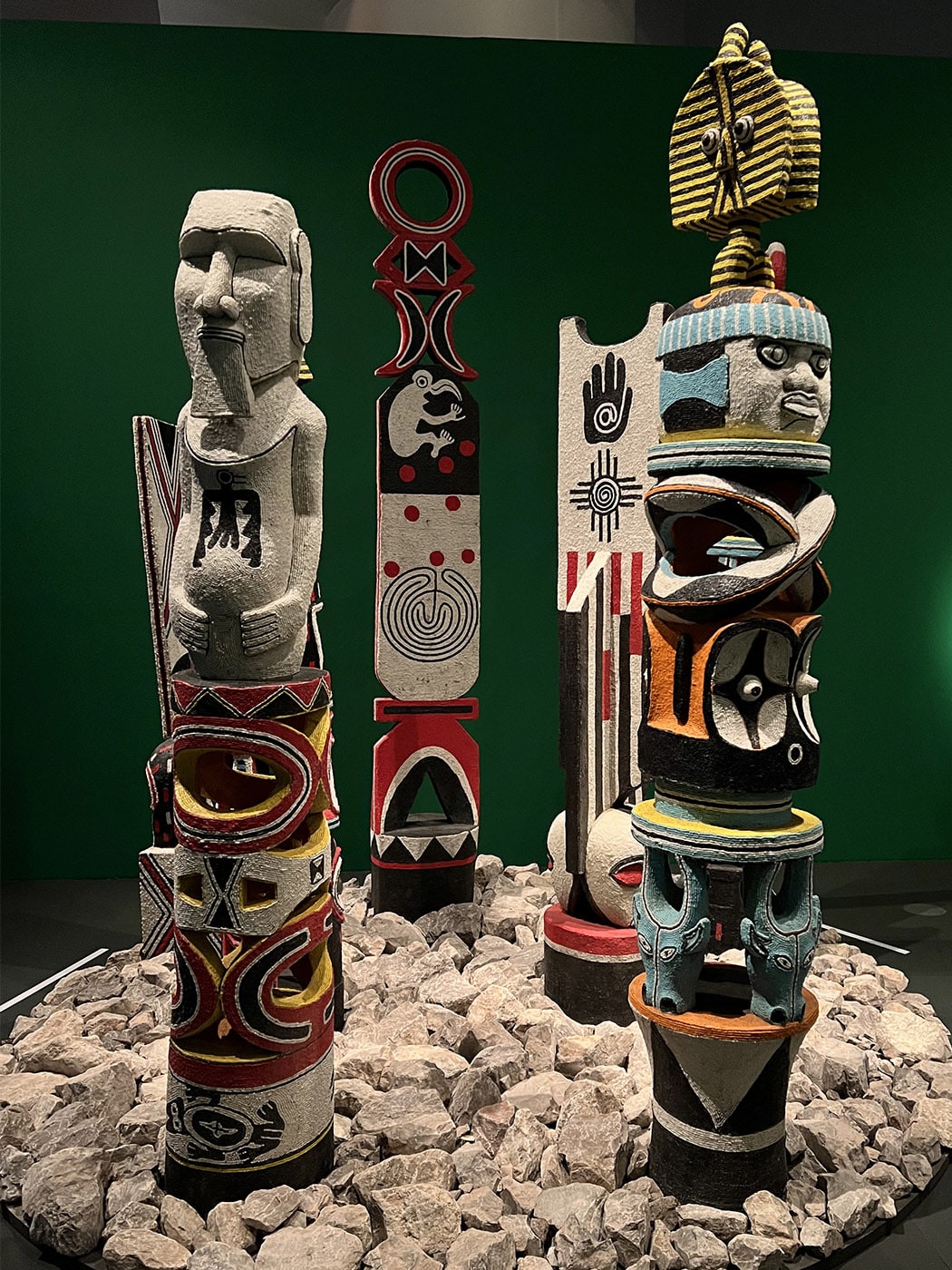
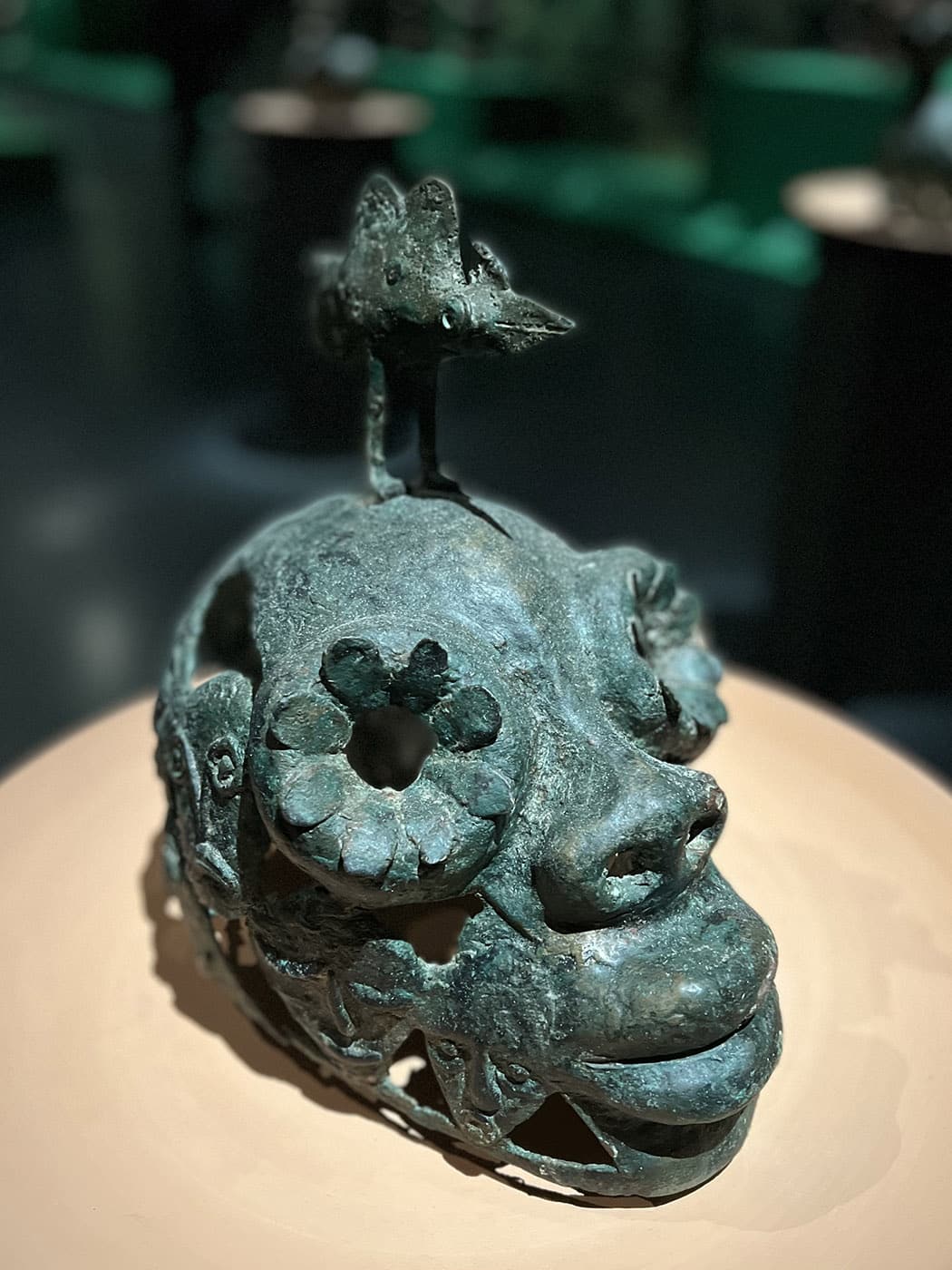
You have until 17 July to visit this exhibition and discover the art and culture of Cameroon’s chieftaincies.
Many events are also organised around this exhibition: guided tours, workshops, conferences, concerts…
Useful informations
Adress:
Quai Branly – Jacques Chirac museum
37 quai Branly
75007 Paris (France)
Opening hours:
Until July 17th 2022
Every day except Monday, from 10.30 am to 7 pm
Nocturne on Thursday until 10pm
Website:
quaibranly.fr
Prices:
Full price: €12
Reduced price: €9
Article produced in collaboration with the quai Branly – Jacques Chirac museum

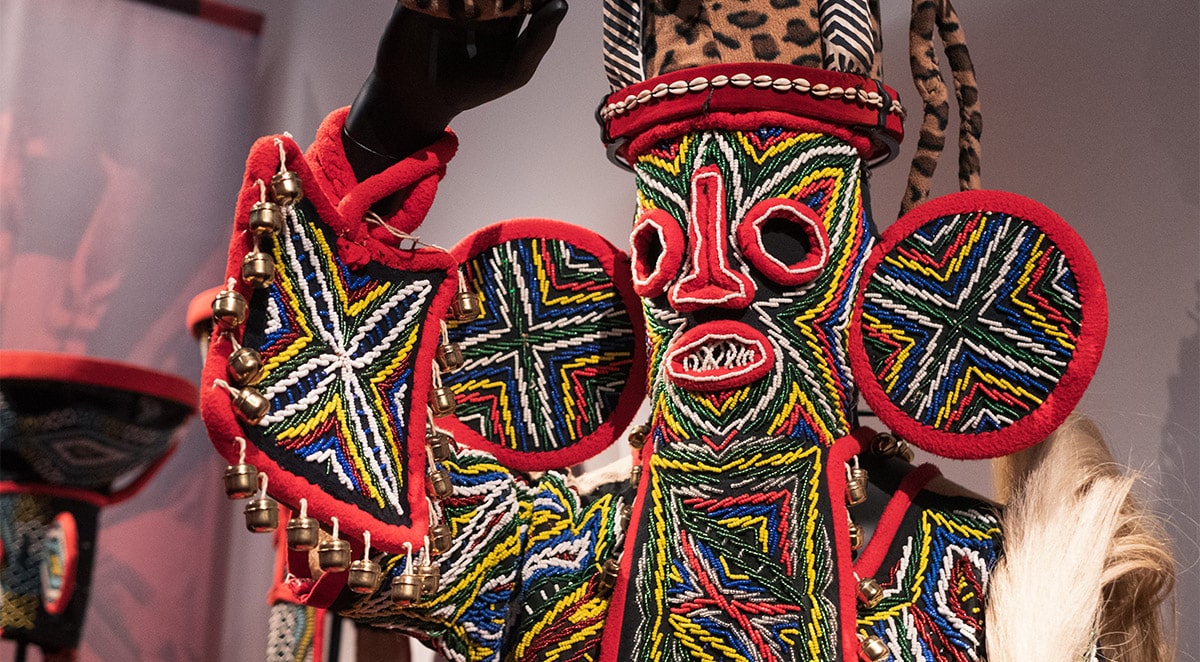



No Comments
Leave a comment Cancel